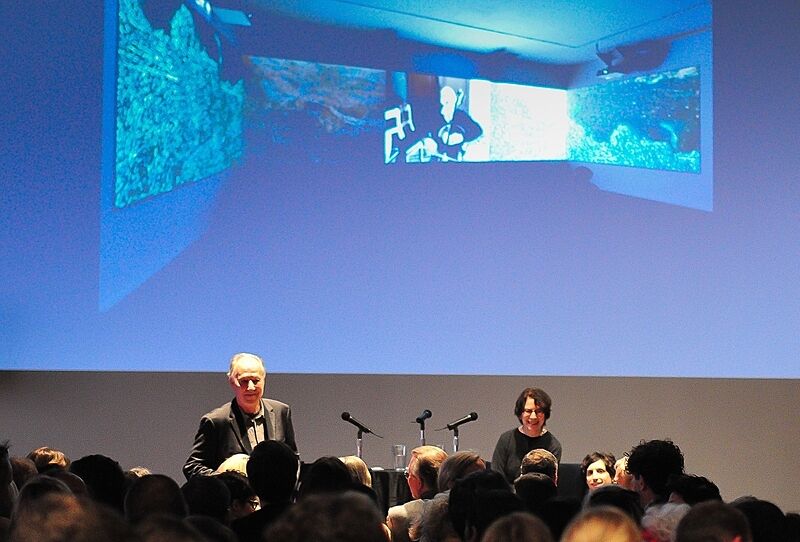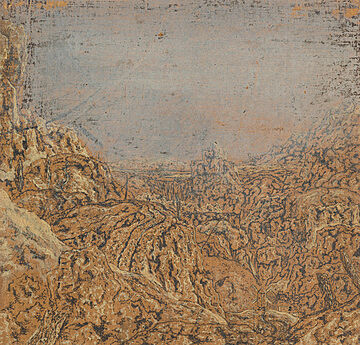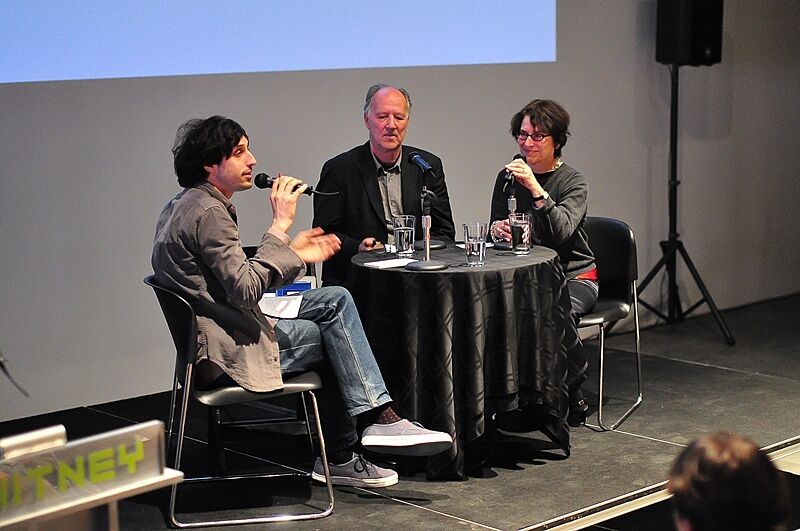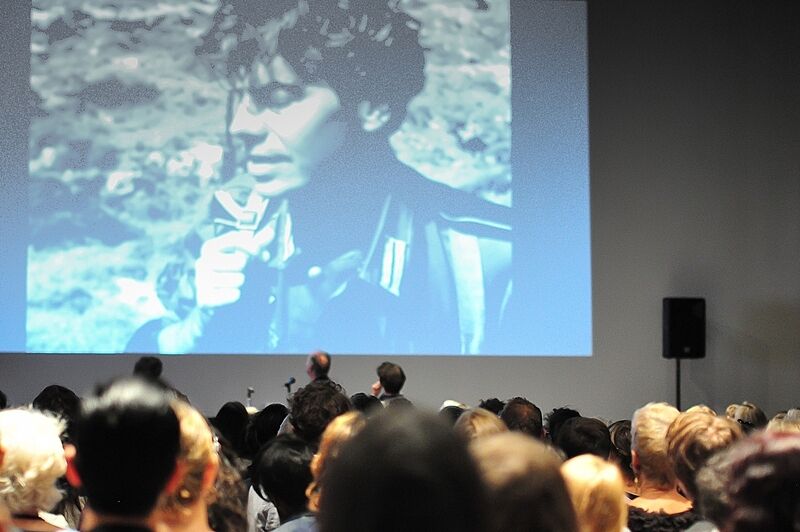Werner Herzog: Filmmaker as Artist
Jun 14, 2012

Werner Herzog and Elisabeth Sussman with images from Herzog’s Biennial 2012 installation, Hearsay of the Soul projected behind them, May 2012. Photograph by Tiffany Oelfke

Werner Herzog is best known to contemporary audiences for his full-length documentaries and narrative films. Featuring unorthodox subject matter and often narrated with his distinctive accent, Herzog’s work captures the intricacies of human emotions and experience with rare authenticity, seeking to reveal the extraordinary qualities of ordinary things around us. His participation in the Biennial 2012 exhibition, however, surprised audiences familiar with his past work. On Thursday, May 17, crowds filled the fourth-floor galleries to capacity, eager to see the filmmaker discuss his project for this exhibition with co-curators Elisabeth Sussman and Jay Sanders.
When approached by the Whitney to participate in Biennial 2012—the first such invitation of his career—Herzog was initially reticent, as he considers himself a “soldier of cinema” rather than an artist and does not frequent museums. Encouraged to accept by his wife, Herzog ultimately created an installation entitled Hearsay of the Soul. The work pairs projections of the seventeenth-century Dutch artist Hercules Segers’s (c. 1590–1638) dream-like, almost surreal landscapes with clips from Herzog’s films Ode to the Dawn of Man and Cave of Forgotten Dreams, in which the contemporary Dutch musician Ernst Reijsegers plays the cello. Combining the handmade and the digital, the optical and the aural, Hearsay of the Soul declares the success of Herzog’s first foray into installation.
Segers, a contemporary of Rembrandt, is virtually unknown today outside of the most scholarly circles. Herzog, however, considers the Dutch artist’s work important, and created his Biennial work to honor Segers, whom he considers the “father of all modernity.” To Herzog, the artist’s prints border on abstraction, an approach to imagery and subject matter that foreshadows the advent of modernism hundreds of years later. Beyond his importance to the entire history of art, Herzog considers this forgotten Dutch master his “soul brother,” as his work similarly expresses a desire to explore completely fantastic landscapes that exist only in the imagination. From Alaska to Antarctica, Herzog’s films often take his audiences to some of the world’s most exotic locales, capturing both the astounding beauty of the natural world and its underlying danger. But Herzog does not want to draw a clear nexus between his images and those produced by Segers: “They do not speak to each other,” he revealed, “but I hope they will dance.”
Herzog has used Reijsegers's music previously in five of his full-length films. In Hearsay, Reijisegers’s bewitching, almost haunting composition, Herzog explained, perfectly suits the surreal quality of Segers’s imagined landscape, immersing his audience in an exploration of the unknown. Moreover, Herzog’s inclusion of both Reijsegers and Segers in the Biennial extends beyond a discussion of the relationship between the visual and the auditory. The filmmaker’s primary intent became clearer as his discussed his views on contemporary art. By including their works in the Biennial, Herzog put two artists generally unknown to audiences in the widely-discussed contemporary art forum that is the Whitney Biennial. His installation thus addresses and counters what he considers the most problematic trends in contemporary art and its market. Galleries and auction houses, he believes, along with artists themselves, now essentially fabricate values for works of art that are created in a seemingly endless supply. This trend, Herzog feels, lies in direct opposition to the rare and limited works of art created by an artist like Hercules Segers. While Herzog revealed that he ultimately regards Segers as more modern than many of the artists featured in this Biennial, his tone remained congenial and contemplative: “I am a sore thumb in your museum,” Herzog admitted, “but at the same time I am proud that I did this.”
By Elizabeth Pisano, Education Intern


